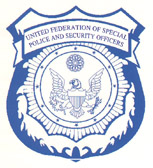
|
United Federation of Special Police and Security Officers, Inc. Vice President's Message
Hector Fajardo,
Vice President This month I want to introduce you to the National Labor Relations Act and a short synopsis of its role. The NLRA was enacted by Congress in 1935. It was hailed at
the time and for many years after as the Magna Carta of America labor.
Previously, employers had been free to spy on, interrogate, discipline,
discharge, and blacklist union members. But in the 1930's workers began to
organize militantly. A great strike wave in 1933 and 1934 included citywide
general strikes and factory takeovers. Violent confrontations occurred between
workers trying to form unions and the police and private security forces
defending the interests of anti-union employers. Some historians believe that
Congress adopted the NLRA primarily in the hopes of averting greater, possible
revolutionary, labor unrest. The NLRA guaranteed workers the right to join unions without
fear of management reprisal. It created the National Labor Relations Board
(NLRB) to enforce this right and prohibited employers from committing unfair
labor practices that might discourage organizing or prevent workers from
negotiating a union contract. The NLRA's passage galvanized union organizing. Successful
campaigns soon followed in the automobile, steel, electrical, manufacturing,
and rubber industries. By 1945, union membership reached 35% of the work-force.
In reaction, industrialists, and other opponents of organized labor sought to
weaken the NLRA. They succeeded in 1947 with the passage of the Taft-Hartley
Act, which added provisions to the NLRA allowing unions to be prosecuted,
enjoined, and sued for a variety of activities, including mass picketing and
secondary boycotts. The last major revision of the NLRA occurred in 1959, when
Congress imposed further restrictions on unions in the Landrum-Griffin Act. Key
Provisions The most important sections of the NLRA are Sections 7, 8,
and 9. Section 7, is the heart of the NLRA. It defines protected activity.
Stripped to its essential, it reads: Employees shall have the right to self-organization, to
form, join, or assist labor organizations, to bargain collectively through
representatives of their own choosing, and to engage in other concerted
activities for collective bargaining or other mutual aid and protection. Section 7 applies to a wide range of union a collective
activity. In addition to organizing, it protects employees who take part in
grievances, on-the-job protests, picketing, and strikes. Section 8 defines employer unfair labor practices. Five types of conduct are made illegal:
Threats, warnings, and orders to refrain from protected
activities are forms of interference and coercion that violate Section 8(a)(1).
Disciplinary actions, such as suspensions, discharges, transfers, and
demotions, violate Section 8(a)(3). Failures to supply information, unilateral
changes, refusals to hold grievance meetings, and direct dealings violate
Section 8(a)(5). Section 8 also prohibits union unfair labor practices, which
include, according to legal construction, failure to provide fair
representation to all members of the bargaining unit. Section 9 provides that unions, if certified or recognized,
are the exclusive representatives of bargaining unit members. It prohibits the
adjustment of employee grievances unless a union representative is given an
opportunity to be present and establishes procedures to vote on union
representation. The NLRA sets out general rights and obligation. Enforcing the
Act situations are the job of the NLRB.
Hector Hector Fajardo Vice President
|
